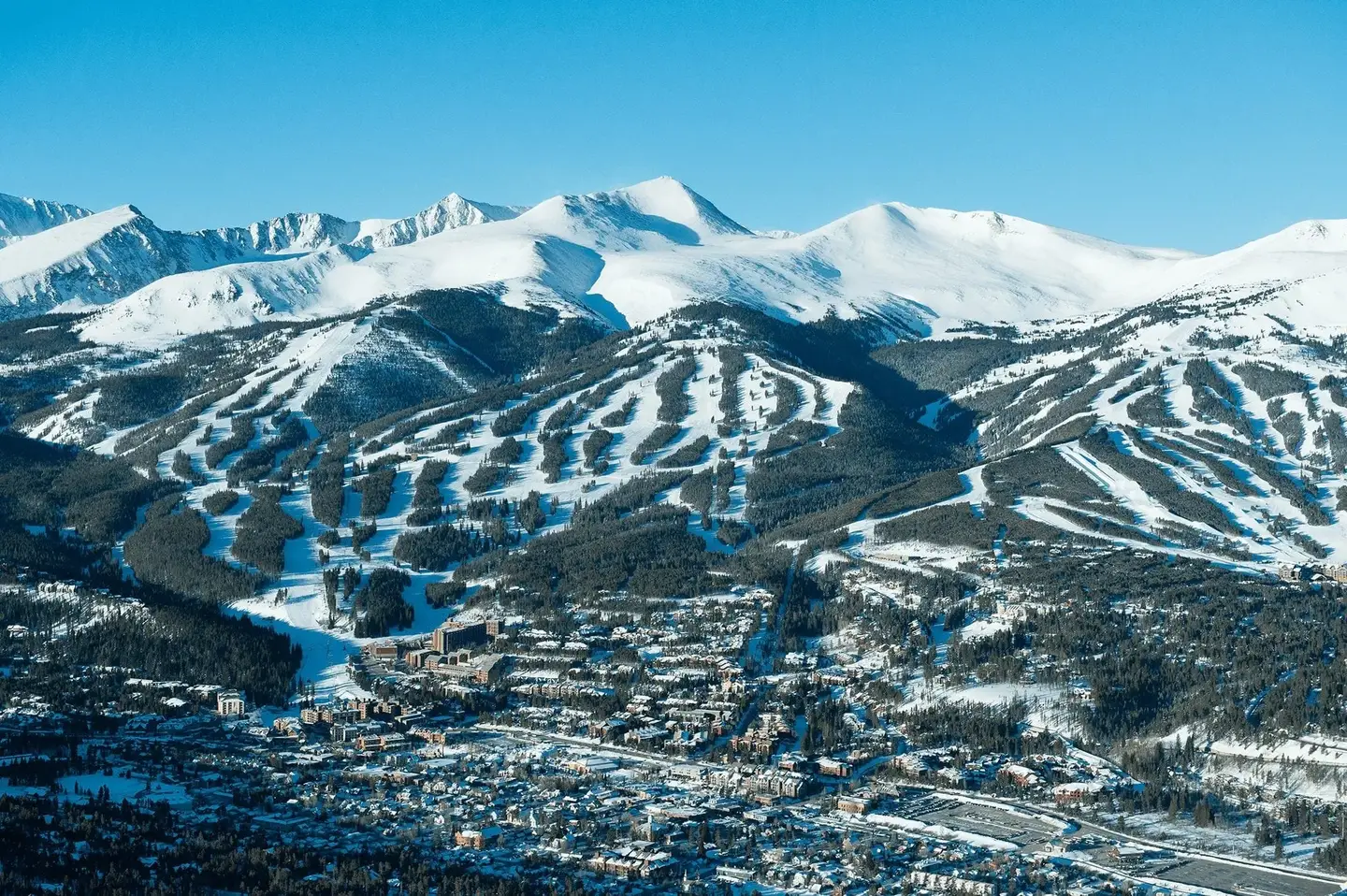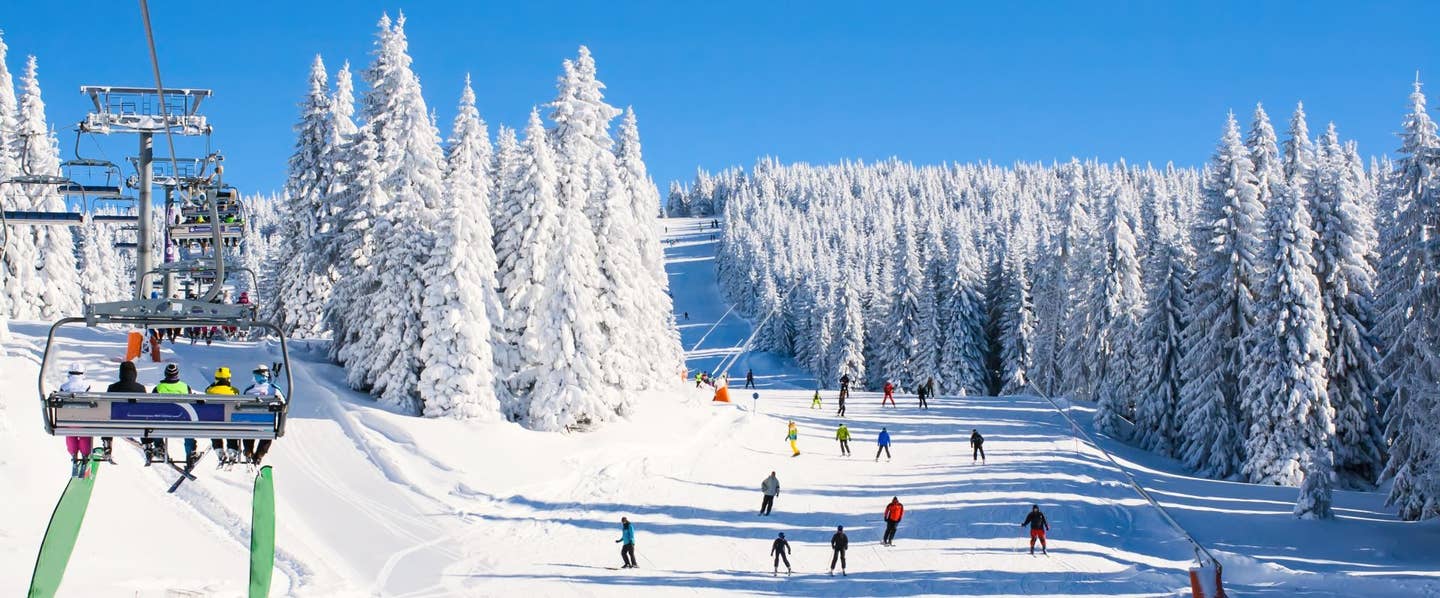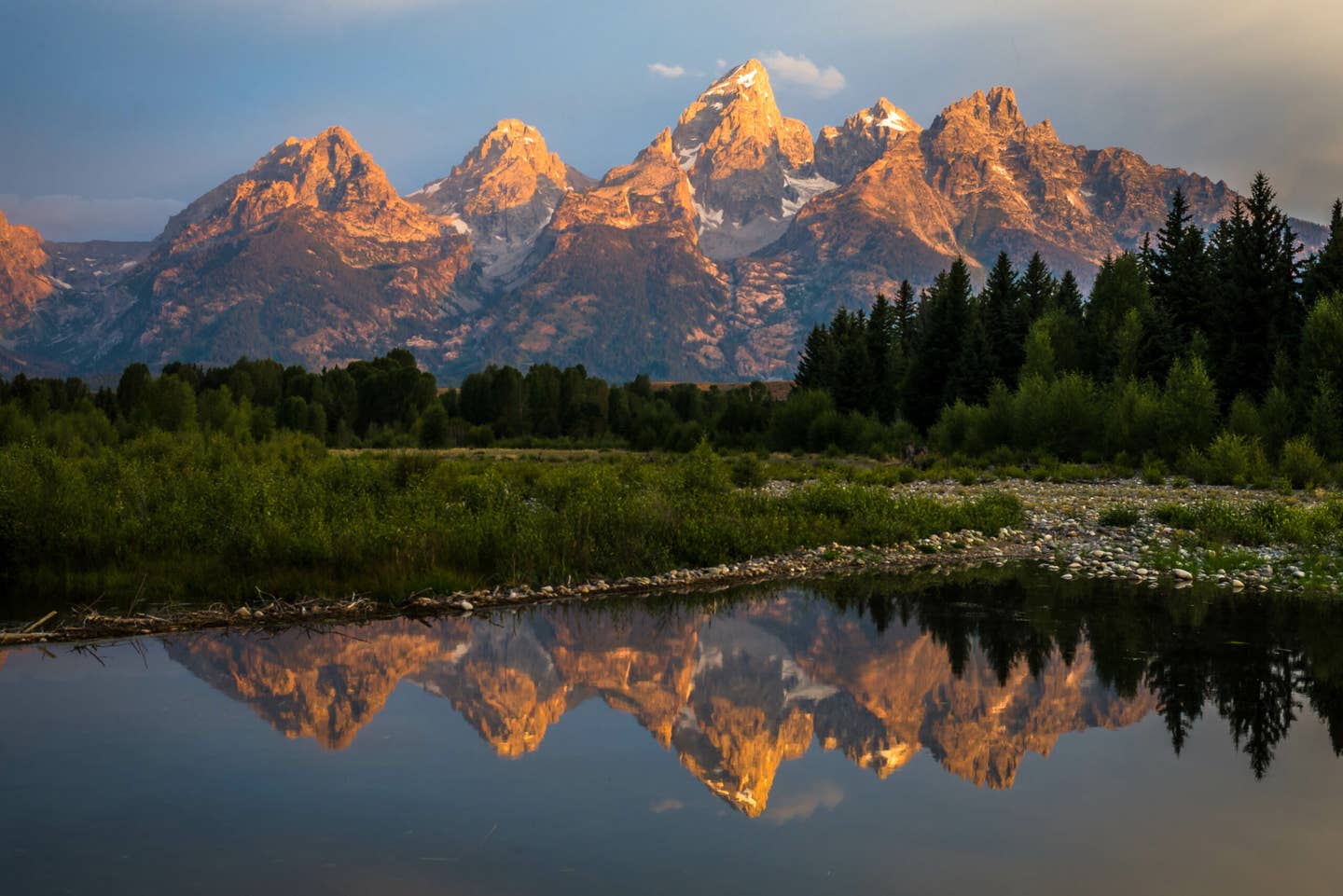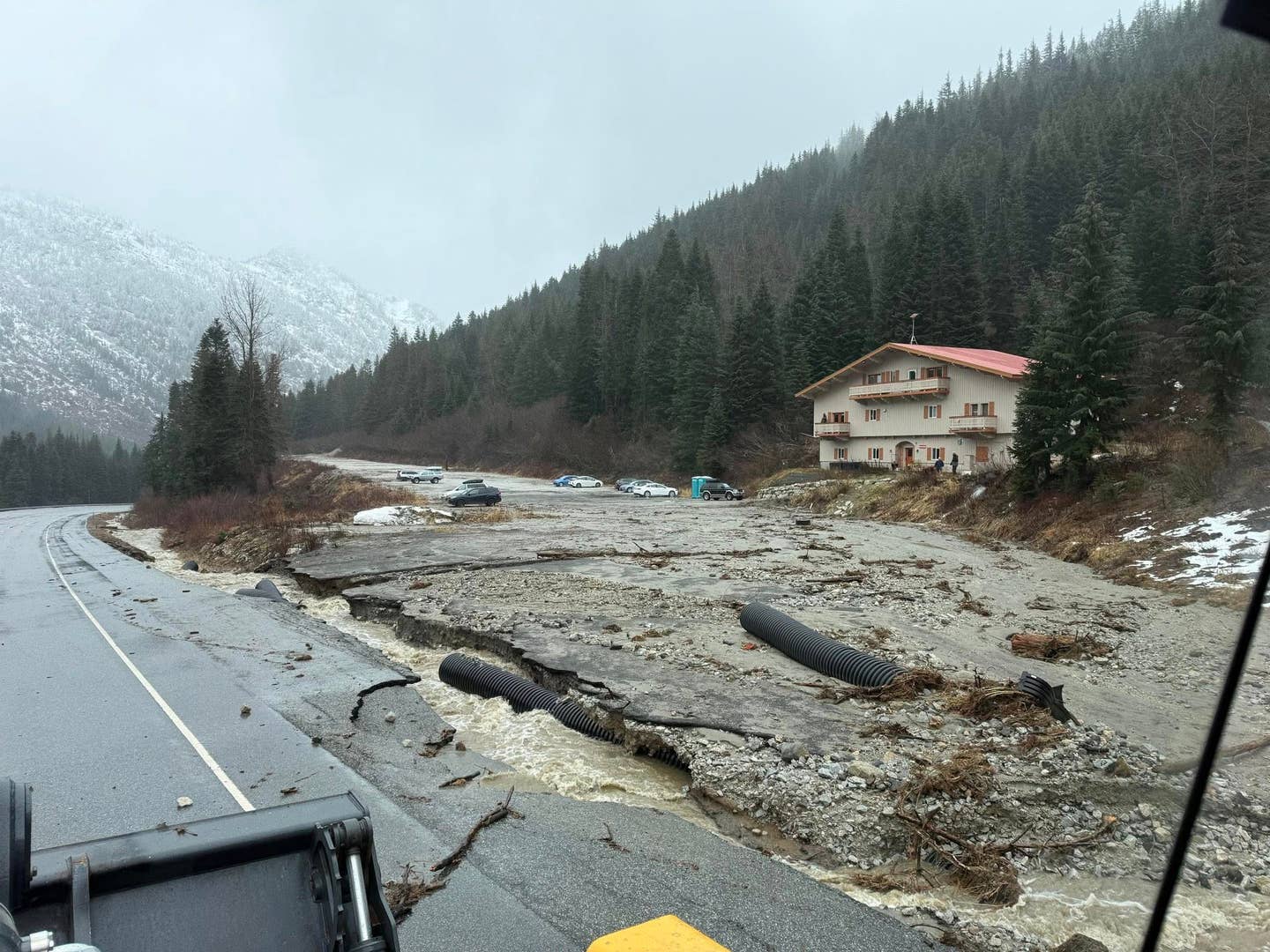

Playgrounds: Kluane | The Science
Popular Stories
What humans can learn from these living, breathing masses of ice.
Last year, a TGR crew made up of filmmakers and athletes joined glaciologists from the University of Ottawa to embark on a film mission deep into the relatively unknown icefields of the Kluane National Park in Canada. The mission was inspired by Bob Bates and Bradford Washburn's 1937 expedition to the region. Along TGR's journey, we discovered more than ever imagined while working with the glaciologists and interacting with the glaciers.
Dr. Luke Copland, professor and the University Research chair in Glaciology in the Department of Geography and Dr. Dorota (Dora) Medrzycka, the team from the University are currently working on the icefields under a research permit granted by the Kluane First Nations (KFN) and Parks Canada. Long before Parks Canada joined the KFN in the stewardship of the remote and beautiful lands of Kluane National Park, the people of the KFN have protected these lands for generations. The support of this research is just one more attribution of their continued devotion to the land.
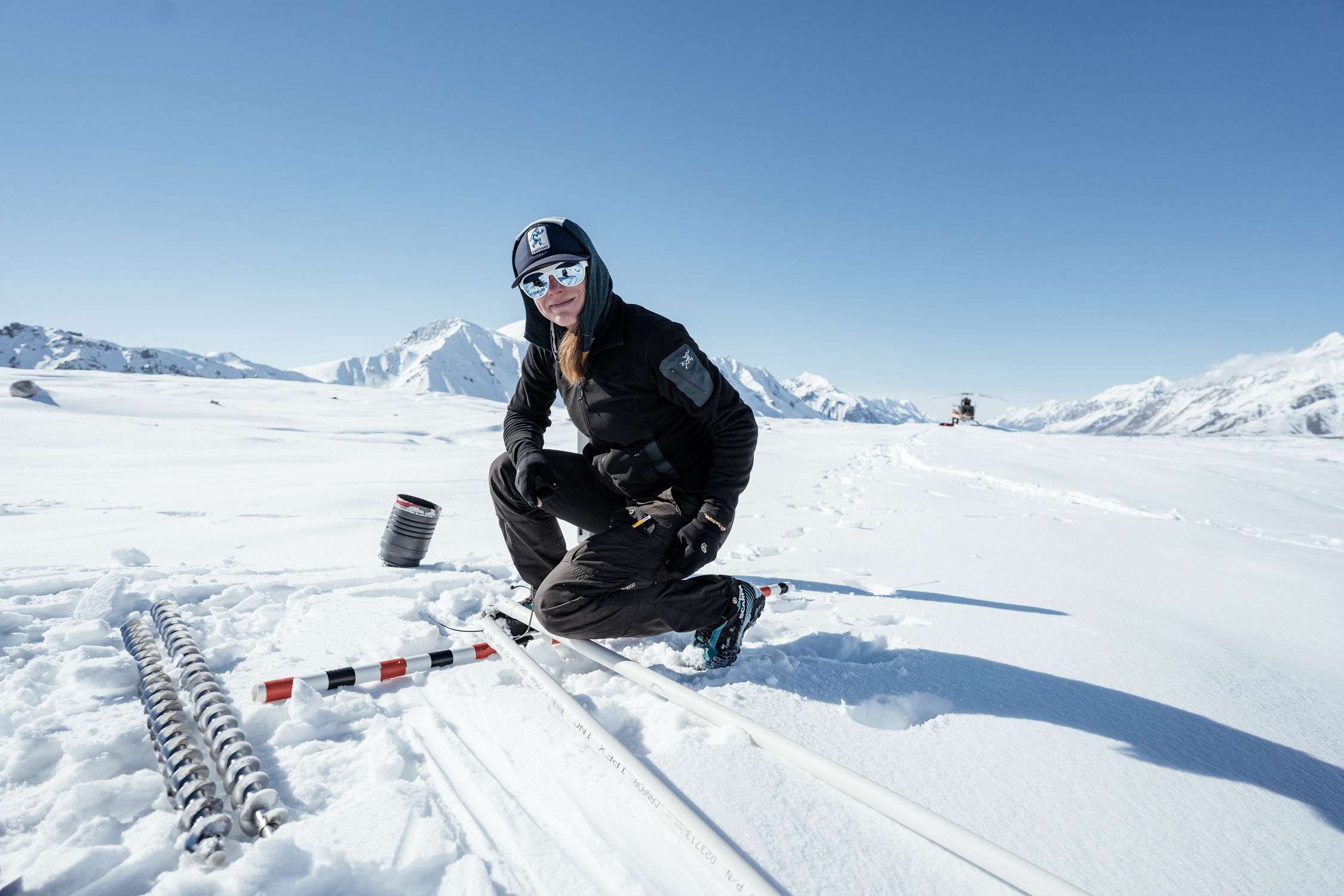
Dr. Dorota Medrzycka in the field in the Kluane. | Leslie Hittmeier photo.
With receding glaciers dominating news headlines, and TGR's recognition of Mother Earth today, the Playgrounds: Kluane series hopes to shed new light on the importance of glaciology research in our modern era.
Let's start with some Glacier 101.
What are Glaciers actually?
A glacier, Dr. Medrzycka says, is simply a big mass of ice. "It forms from the accumulation of snow. When there's snow that falls in a given winter, it doesn't entirely melt the next summer, it accumulates. With time, it gets more and more layers, and that snow will become denser, and eventually, it turns into ice.
How does it actually move?
It deforms (fancier word for it moves, melts, etc.) under its own weight. Because of gravity, glaciers will flow downhill. Literally in a straight line, it couldn't be more straightforward: Melting glaciers flow following the laws of gravity.
Why are glaciers important?
In certain areas of the world, populations rely on the fresh water and melt water that comes out of glaciers. If the glaciers retreat enough, that water is going to start diminishing so that water resources for a lot of the communities, especially in the Andes and in the Himalaya is going to start going away, meaning there's going to be less drinking water. Glaciers act as a storage unit for water, so if they do start melting a lot more, sea level will rise and we will lose quite a bit of coastline in certain areas and a whole lot of other implications.
Key Terms:
Moraine: This is material that is left behind by a moving glacier, like soil and rock. You know how rivers carry debris and silt? Yeah, glaciers do that too. Pro tip: Compared to glacier ice, moraine's are MUCH better to camp on.
Ablation Area: The ablation area is the part of the glacier where there's more melt on the surface than there is snow each year, meaning that anything that was on the surface 85 years ago today, will likely still be there on the surface instead of getting buried by more snow and ice.
Glacial Surging: These are the 1 percent in the glacier world. 99 percent of the world's glaciers move at roughly the same speed from year to year, which would be a few hundred feet. Surging glaciers, however, move to the beat of their own drum. It's a phenomenon that few glaciers undergo where they don't move for potentially several decades, and then suddenly all that mass that's built up when they're not moving accelerates VERY quickly. A surge can occur from anywhere between a year to as much as a decade. These guys go from moving a few feet a year to potentially several thousand feet per year, and then one day, they slow down again. Got somewhere to be, Ms. Walsh Glacier?
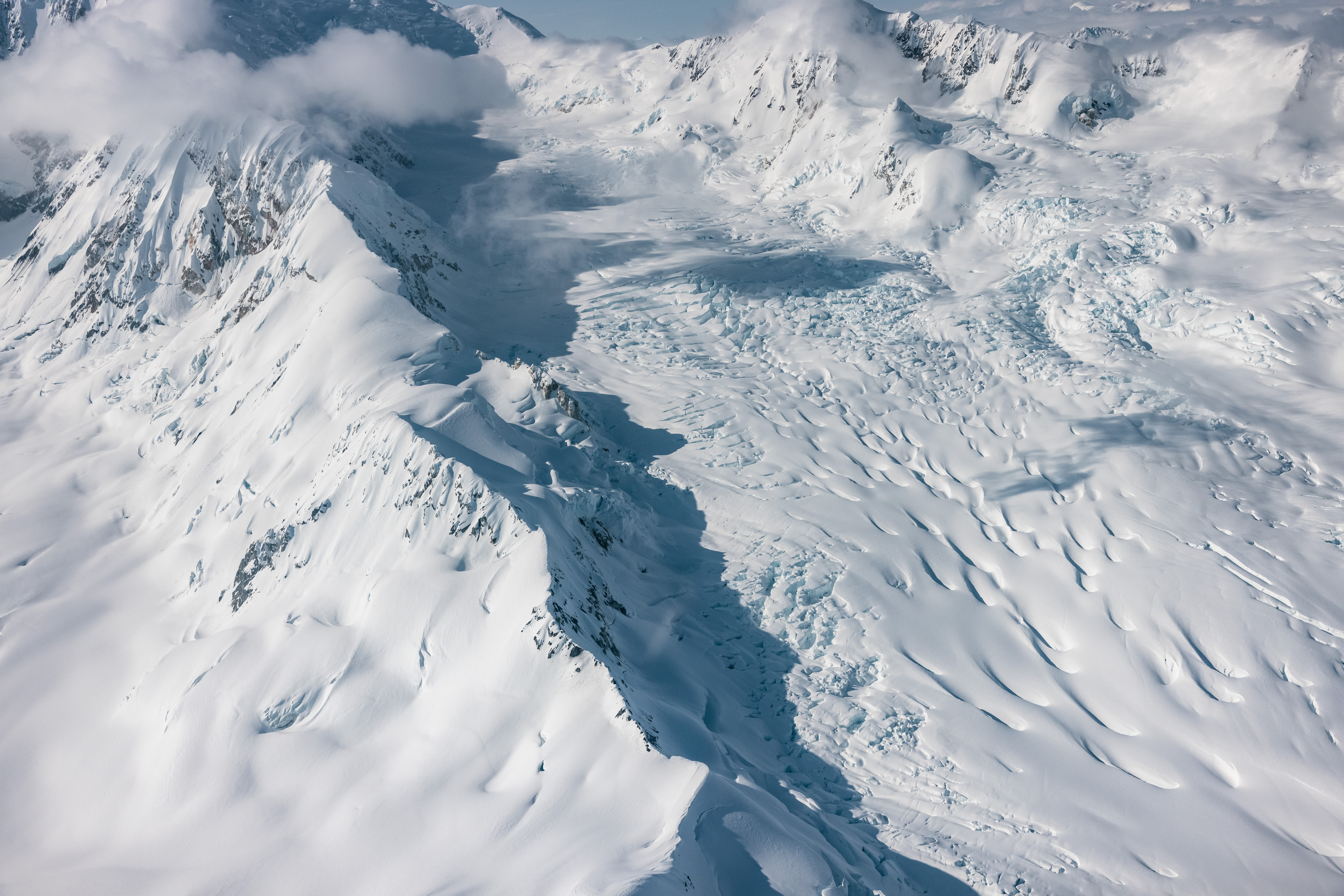
Some glaciers in the Yukon can be up to 50 miles long. | Tyler Ravelle photo.
Part 1: What's this Research All About, and Why Does it Matter?
Dr. Luke Copeland has been working on glaciers for 30 years, specifically in the Yukon, for half of his career. Dr. Dorota Medrzycka has been researching glacial change for over five years. Something to note about these glaciers is that they are HUGE compared to others worldwide. Some glaciers in the Yukon can be up to 50 miles long.
According to Luke and Dora, what's really changed in the last 20 years is the use of satellite images. The ability to look at glaciers from space and combine those images with measurements on the ground is when scientists can really start to understand how glaciers are changing on a macro scale. Measuring those changes across entire mountain ranges, like in the Yukon, provides invaluable data applied to not only the vitality of glaciers in these remote areas, but starting to understand the crucial impact they have globally.
Dora, what is the research you're doing and why is it important?
DM: We're monitoring glacier flow. With climate change happening, it's important to track the velocity of the glaciers to answer the question of what will happen to the glaciers. Having the longest record possible is really valuable, since the climate doesn't change from one day to the next, it takes a long time. Are they going to speed up because there's an increased input of meltwater to the system, meaning will they start sliding faster? Or are they going to lose so much mass that they're going to start flowing slower? It's sort of two different things that could happen, and right now, what we're seeing is that most glaciers are actually slowing down because they just don't have enough mass to push down the glacier. They don't have enough mass to maintain those velocities, so they're slowing down. Understanding how those glaciers are moving over multi-decadal time scales is what we really need. And there's very little of those records around the world, but especially around these parts here.
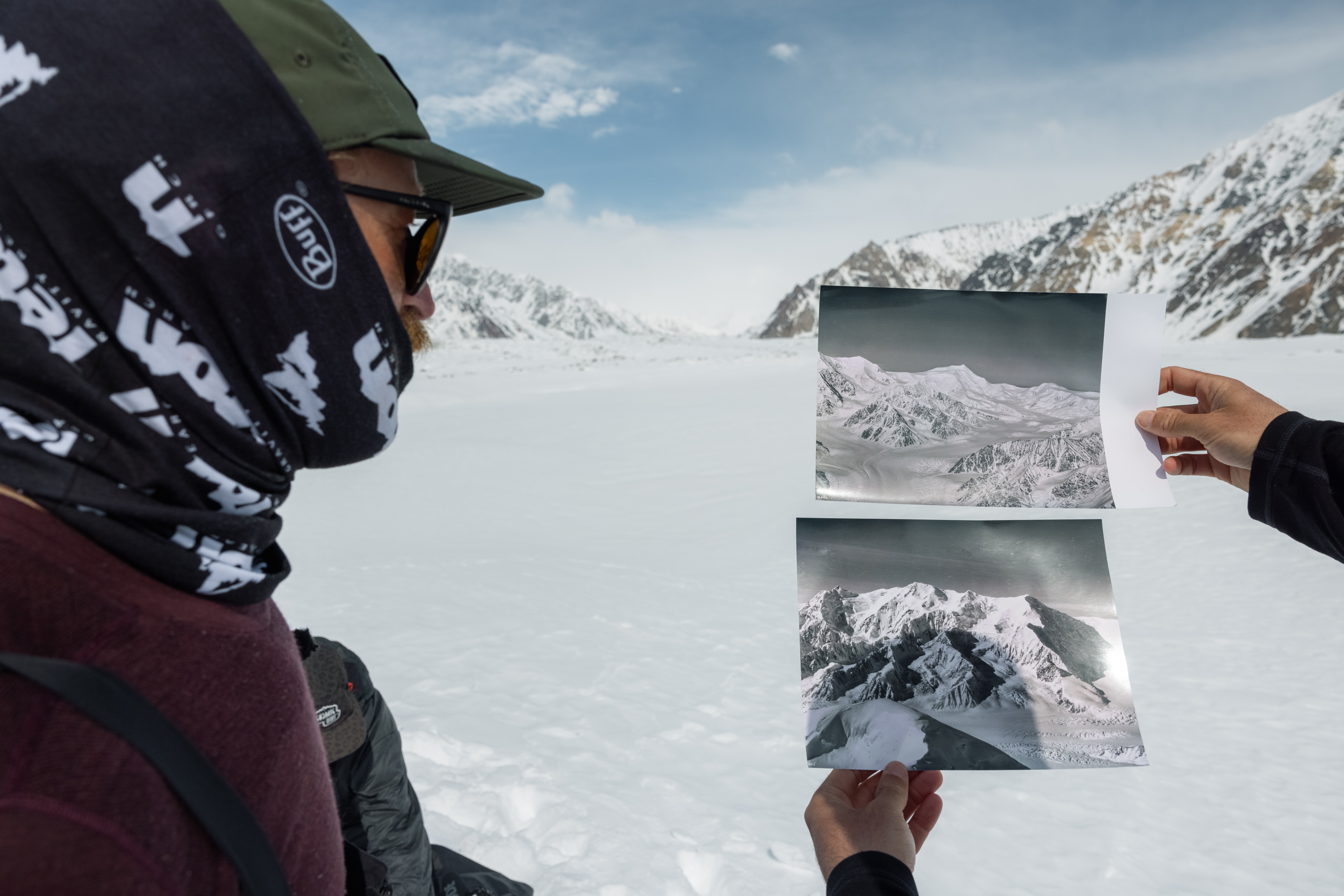
Comparing archival photos with today's glacier movements. | Tyler Ravelle photo.
Luke, you've been doing this for 30 years, what are the changing glaciers telling us as it pertains to climate change?
LC: It's clear that there's been a dramatic increase in the amount of glacier melt that we've been seeing in the recent past. When we look at losses over the last couple decades, they've roughly doubled when we look on a global basis. When we look on a local basis, in some places they've more than doubled in terms of the amount of melt that's occurring on ice.
Within one generation or less, we're not only losing glaciers, but we're rapidly increasing the rate of loss of glaciers. This past summer, for example, in Switzerland and the European Alps, it was a super warm summer where many glaciers melted 15-20 feet or more. We thought we had a record melt year about 10 years ago in Switzerland, and it's about half the melt rate that we've seen this year. We keep surpassing ourselves in terms of just how much mass is being lost. We thought a huge amount of ice was being lost 10 years ago, and today we're seeing rates that were double that. It's a lot of loss in mass plus a real acceleration in the rate of mass loss that we're seeing.
Why is that a problem?
LC: It's important and it's a problem on a range of different scales. On local scales, glaciers essentially act like sponges. They soak up the snow from the winter, then gradually release it as melt water through the summer. If you're in somewhere like Alberta, for example, those areas are heavily dependent on having summer river flow that they can then use to irrigate the land. Glaciers are really important on a local scale for crop irrigation. On a global scale, it's important ultimately because of sea level rise. The majority of sea level rise that we've been seeing in the last couple decades ultimately comes from glaciers and ice sheets, and that contribution has been increasing rapidly in the last decade or two.
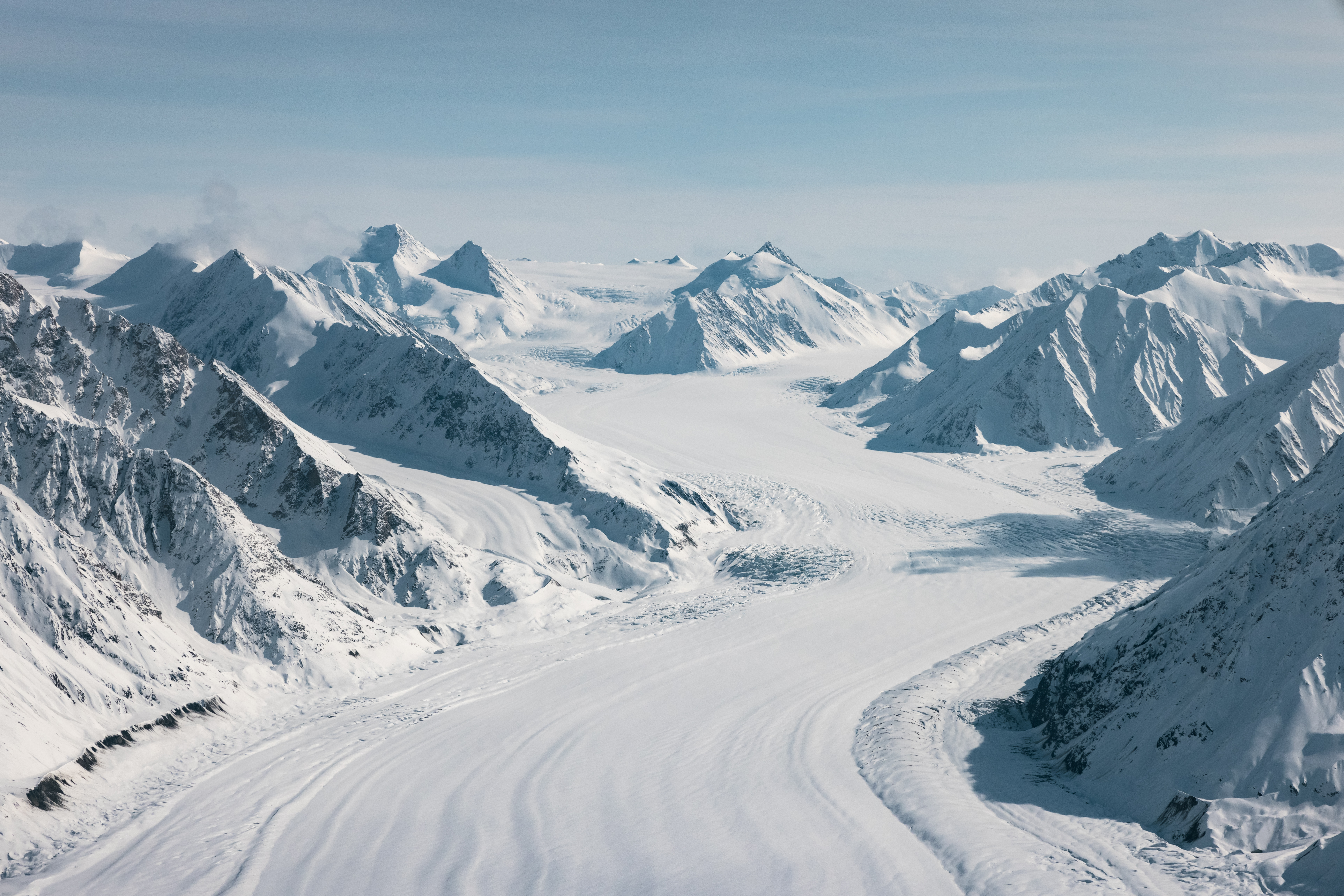
99 percent of the world's glaciers move at roughly the same speed from year to year, which would be a few hundred feet. Surging glaciers, however, move to the beat of their own drum. | Tyler Ravelle photo.
Glaciers can tell us the amount of carbon that's been released in the atmosphere at certain points in time. If you can tell how much carbon has been released in the atmosphere year over year, then equate how carbon has affected climate change, you can then bring it back to how that affects glaciers.
LC: Ice cores can tell us what the atmospheric composition was in the past and present. We can see the amount of carbon dioxide that was held in the atmosphere in the past, and how much we have today. What we are seeing is that there's been a dramatic increase (in the last decade or two) that is unprecedented in terms of how much CO2 we're seeing in the atmosphere. It's far above anything we have in the historical record for tens, hundreds of thousands of years in the past.
Within what's happened with the glaciers and what you're seeing, is that hard evidence that there's a connection between the two?
LC: Looking back tens of thousands years at ice core records and seeing how glaciers have changed on a global basis, there's a very strong, essentially direct relationship between the amount of CO2 in the atmosphere and how much ice exists on the Earth's surface. When there's more CO2, the atmosphere warms up. That means that glaciers melt, which means there's less ice on the land. That water gets transported to the oceans which causes sea level rise. Vice versa, if global CO2 levels drop, the glaciers and ice sheets grow in size and global sea levels reduce.
Sign Up for the TGR Gravity Check Newsletter Now
When we look at the levels that we've seen in the past and how much ice has been lost in the past for CO2 levels that are lower than today, we've seen a lot of ice loss. When we're looking at these rapid recent increases in CO2, if you look at what happened in the past, it tells us we should expect dramatic ice losses to continue occurring in the decades and centuries to come. The glaciers are doomed, somewhat, in many places. By the year 2100, there may be no glaciers left in countries like Switzerland. Today, there's still quite a lot.
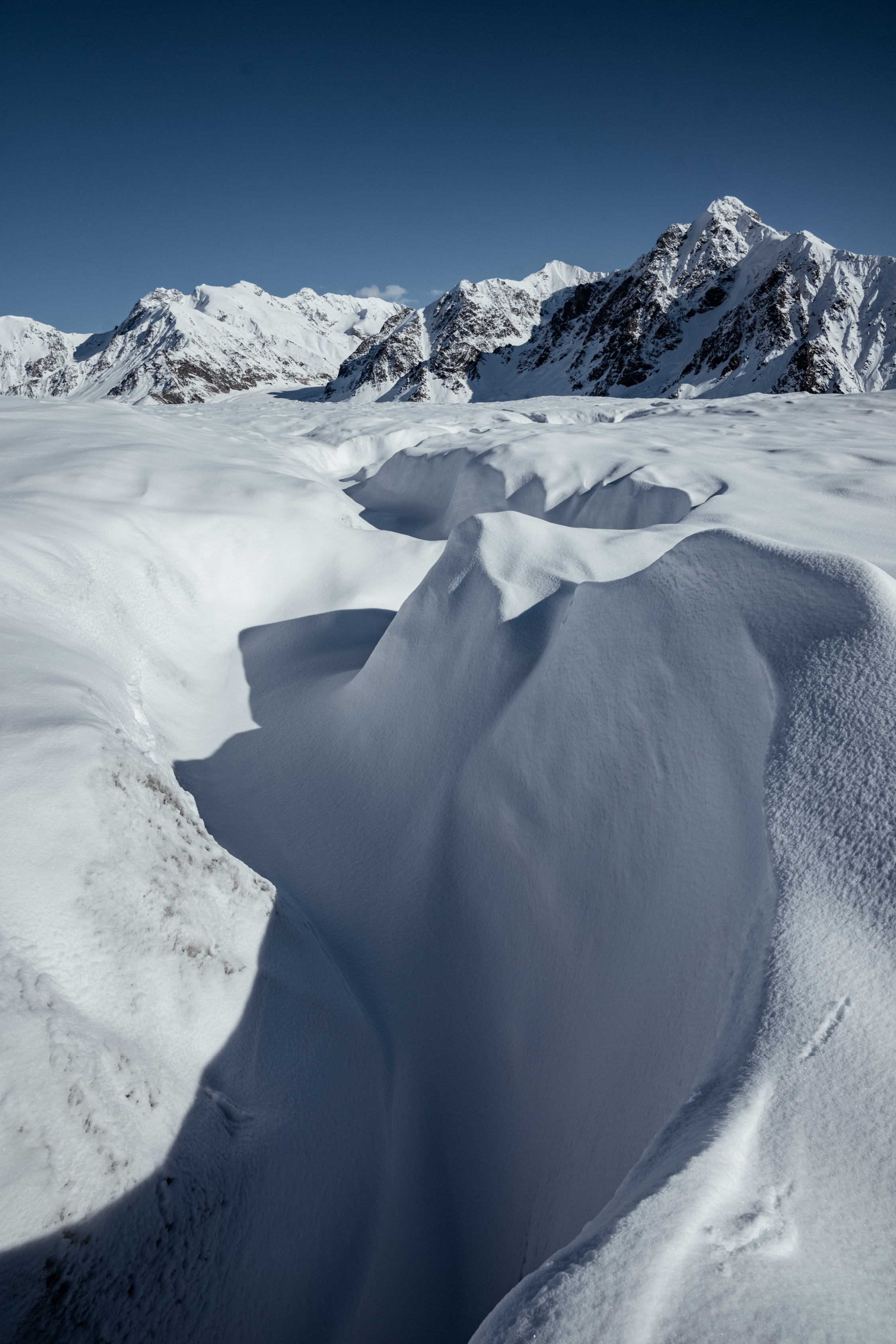
Glaciers are an ever-moving mass, with crevasses opening up and closing at the whim of nature. | Leslie Hittmeier photo.
Why are tracking glaciers and their movements important? What are you looking at when you look at satellite imagery of glaciers, and what information can that provide?
LC: When we think of how glaciers change, we kind of think at first in terms of glaciers only changing because they're melting on their surface, but there's several other really important processes too. One of the really important ones is how quickly glaciers move. If we have glaciers that are speeding up, and if they flow more quickly to lower elevation areas or towards the ocean, when they get to those lower elevation areas of the ocean, they would lose mass more quickly than they would at high elevations. It's important for us to understand not just how much melt there is on the surface, but how quickly that movement is occurring and if it's changing over time. Ultimately, if glaciers are speeding up, we might expect an increased rate of ice loss. If glaciers are slowing down, vice versa. Perhaps it won't be quite as bad. Perhaps they'll kind of somewhat regulate how much mass they're losing. So, not only is measuring the melt on the surface important, but knowing the velocity of the ice is really important, too.
When we look at satellite images, we want to know how quickly the glacier is moving. If you look at materials that are 85 years old, those won't be in the same place today as they were 85 years ago. The images that we had access to only went back about 20 years.
From purely a climate change perspective, what does it mean for the glacier that if you discover it has moved further than you had expected over that period of time?
LC: For the velocity changes, it doesn't mean that much in the grand scheme of things, but when we combine the velocity changes with the thickness changes, that's when we can start to put everything together. If we know how much the glacier's thickness changed in the last 85 years, and we know what the area of the glacier is, we can multiply those two things together. If you know that the ice has thinned by 100 feet and the glacier is 5,000 feet wide and 20 miles long, when you multiply all those together, we can then get a volume of water being lost from that ice over time.
By itself, finding the velocity is one piece of the puzzle. When we put it with other pieces of the puzzle, particularly the change of thickness on the surface, that's when we can start to get some interesting numbers from what contribution that glacier has given from that bit of extrapolation to other ones in the region of just how much ultimately contributing to global sea level rise.
Ultimately, those data points are telling us something that isn't really good news, right?
LC: When we look at glaciers globally, we're seeing dramatic losses. That rate is increasing. When we look at impacts on global sea level, glaciers have really become dramatically much more important in the last couple decades. Average thickness losses of glaciers in Alaska right now are about three feet per year. Doesn't sound like a lot, but when you multiply it by 10, 20 years - we start losing ice that's 50-100 feet thick. You multiply that by someone's lifetime, we'll lose entire glaciers. In a single generation, we're going from glaciers that were pretty thick, pretty comprehensive, to ones that today, and projecting this into the future, will be gone a few decades from now for some of the smaller ones.
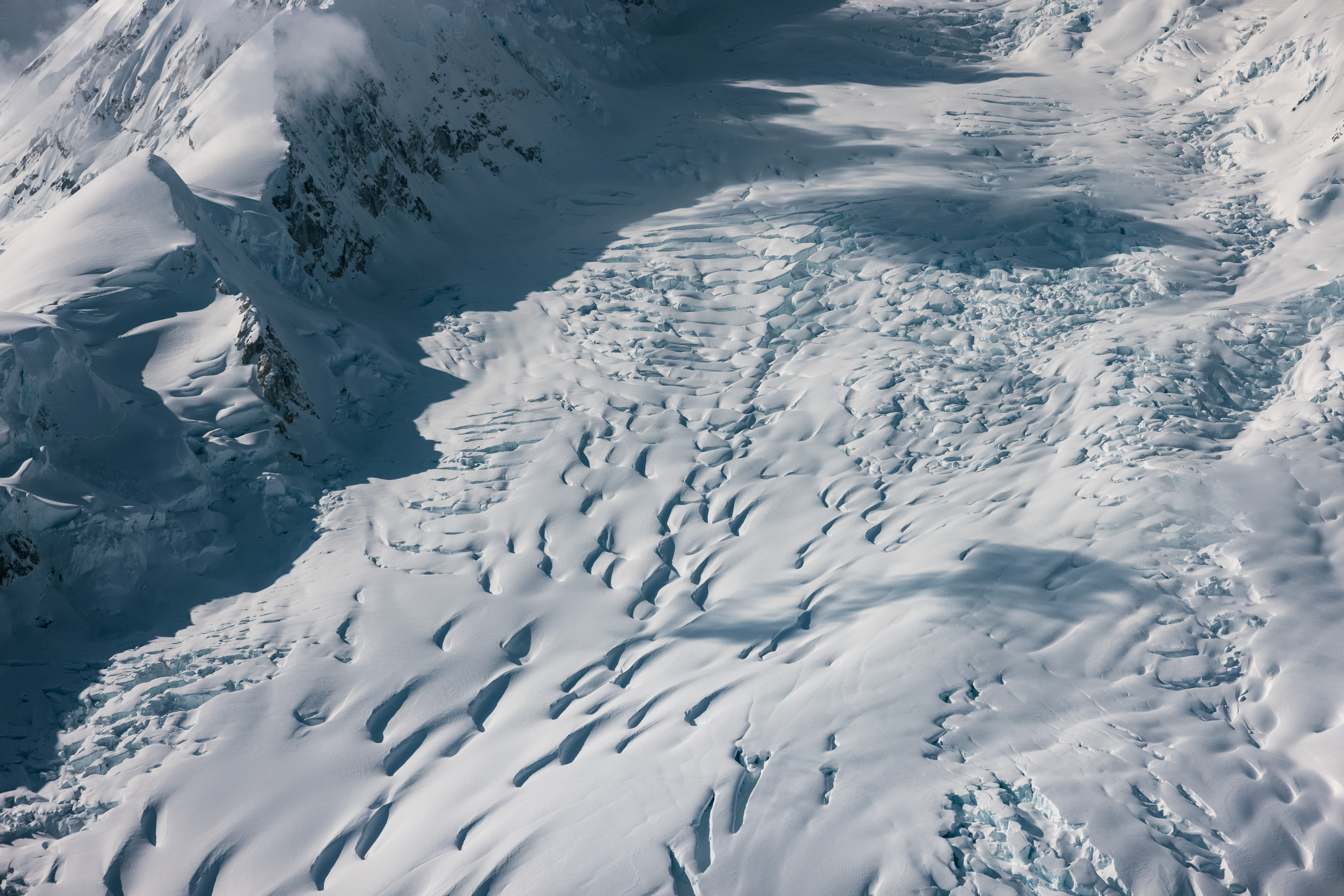
In certain areas of the world, populations rely on the fresh water and melt water that comes out of glaciers. If the glaciers retreat enough, that water is going to start diminishing so that water resources for a lot of the communities may disappear. | Tyler Ravelle photo.
Part II: What's Next?
What Does this mean for change now and in the future?
LC: It's easy to forget that we can look at glaciers from space and understand what's going on, but as scientists, we're not living in the affected areas day by day. When you're living there permanently, like the First Nations, they're seeing every single day what's happening. It's their lifetime, their parents, their grandparents. That long-term knowledge of the landscape and in-depth understanding of how it works and how it's changing, they have far better understanding than we can have as scientists. It's really great and imperative to work with First Nations and get that much better of an understanding than we can have as scientists who are limited somewhat by what we can see. By working together, we can better understand how and why things are changing.
Whenever you work in Northern Canada, it's really important to remember we're not the first people on the land. The land has been occupied for a very long time, much longer than us Westerners have been here. In the Yukon, we're working in areas on the Walsh Glacier that are traditional lands of the Kluane First Nation. There's other First Nations in the area, too. It's important to understand that officially we're working within Kluane National Park, operated by Parks Canada, but parks aren't the sole people looking after the land. The First Nations are really important too in that the park is co-managed.
We work with Parks Canada to make sure we abide by the regulations, but also communicate with Kluane First Nation and other First Nations to tell them what we're doing, to their permission as well, and to ensure that if we find anything, they're the first to know. We don't want to take things from their land. Hopefully we can work in a cooperative way as scientists where we can answer some of the questions they might have about how and why their landscape is changing.
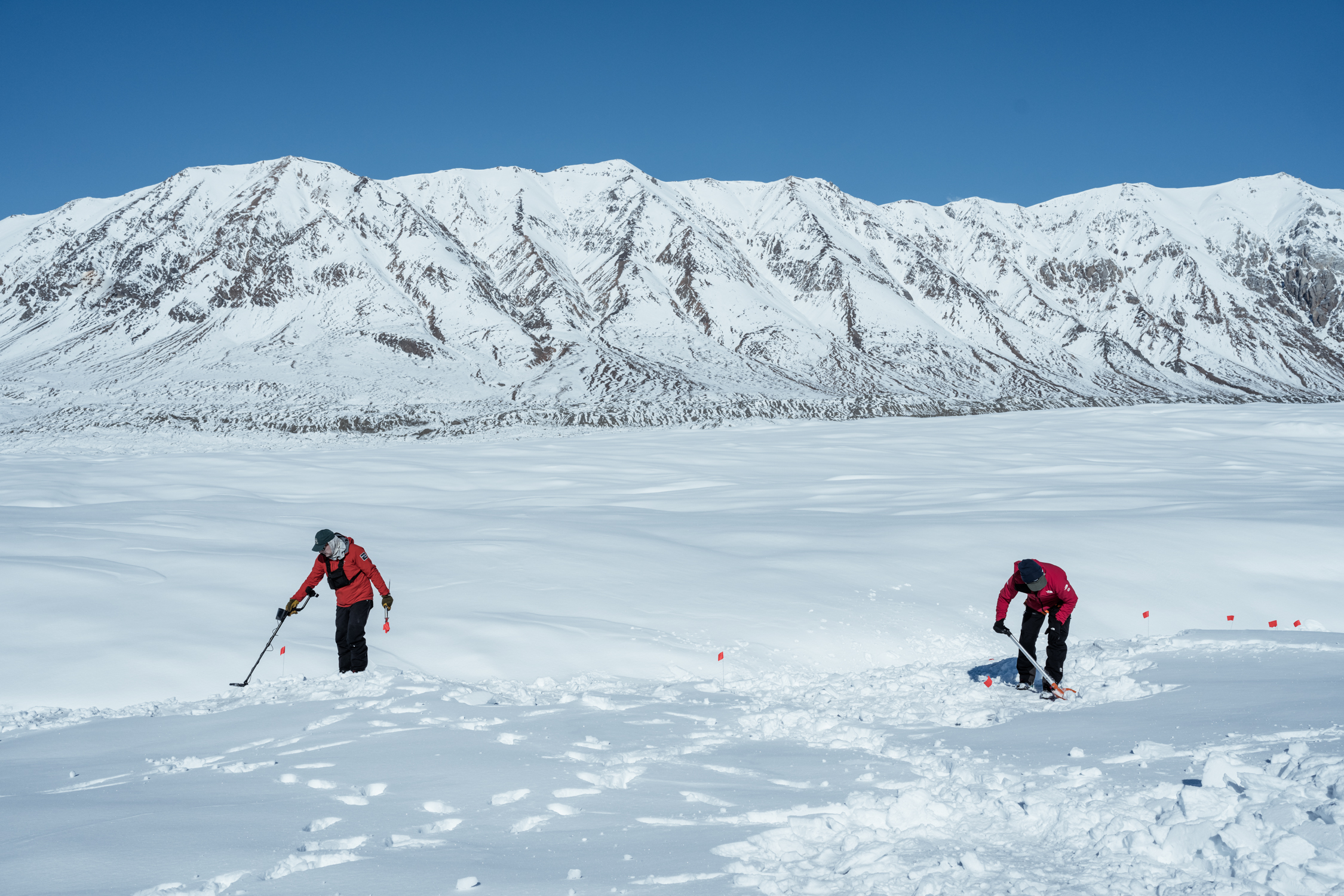
Scientists taking measurements on a glacier in the Kluane region. | Leslie Hittmeier photo.
The First Nations have a much longer oral history than we have as a written history for how these nations have changed in the past. We can use their oral history and learn from First Nations to better understand how things have changed. When we look at glacier changes in Kluane National Park, we can go back 50 years looking at old aerial photos, but their oral traditions go back much further back in time. There's been big changes for these glaciers. For example, large lakes that have formed in the past in Kluane National Park are now drained. That long First Nations oral history provides a much longer term and much more in-depth understanding of the land that we can never just as scientists. It's really great to be able to work together with First Nations and Parks Canada together to better understand the land and how it's changing.
LC: We can use human history in all kinds of different ways. Some of it's finding artifacts, sometimes it's combining First Nations traditional knowledge, sometimes it's combining paintings that are centuries old. Combining alternate sources of information with our modern scientific methods can tell us a more comprehensive story of how the glaciers are changing over time.
It allows us to look back much further, and that's what we need to understand these changes we're seeing over the last few decades. Are these types of changes really unusual in the historical record, or are they something that we might expect? If we can better understand how differently they are today compared to what happened in the past, that gives us a better understanding of what we might expect to see happening in the future.
